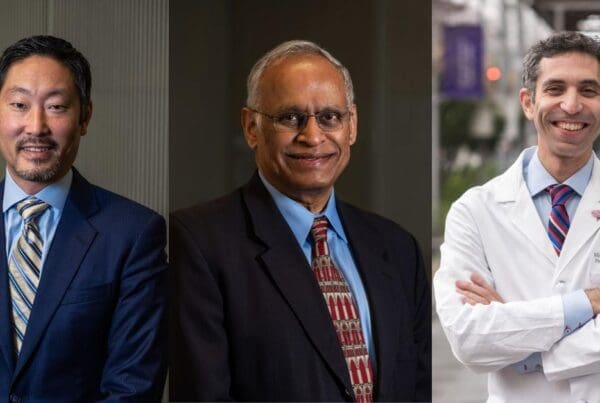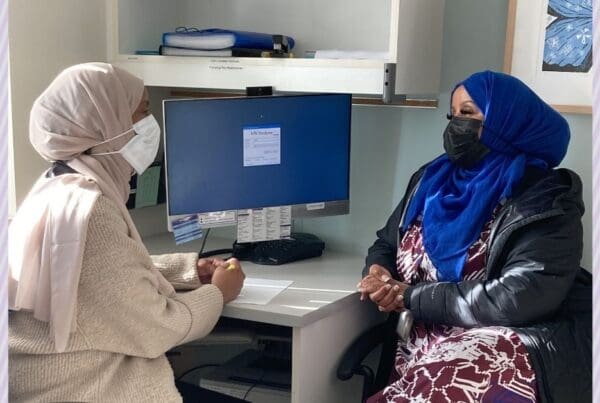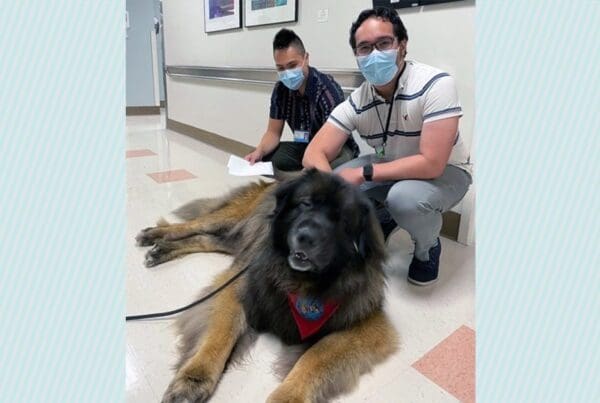In 2013, the Heart Institute at UW Medical Center – Montlake performed around 1,200 heart procedures. Since then, that number has increased more than fourfold to 5,600 per year.
For the 80 or so nurses, technologists and clinicians working there, that isn’t just a milestone — it’s proof of the hard work they put in each and every day to care for their patients.
“We’re really proud of our team,” says James McCabe, MD, an interventional cardiologist who serves as the medical director of the cardiac catheterization labs. “We have a bunch of folks that work exceptionally hard, and that’s reflected in all that we do.”
As part of our new “UW Medicine Life” series, which goes behind the scenes with UW Medicine employees, McCabe details what a busy day at the Heart Institute looks like.

In interventional cardiology, procedures are minimally invasive but require intensive prep work from Heart Institute staff, such as cath lab nurses (left), who prepare for procedures and patient recovery, as well as physicians (right), who consult on cases to figure out the best course of action. (Photos taken by Eder Reynoso prior to COVID-19)
“In interventional cardiology, we are focused on quite a big mix of things, from emergency procedures — that’s people who walk in the door and need urgent care or those who are flown in by helicopter or fixed-wing plane from within five states — to scheduled elective procedures like heart valve replacements, artery blockage stents and other heart repairs,” McCabe says.
He usually spends three days per week performing procedures in the cath lab, one day in the clinic and one day catching up on paperwork or research. A typical day for him starts at 7 a.m. and ends around 8 p.m. — or until the work is done.
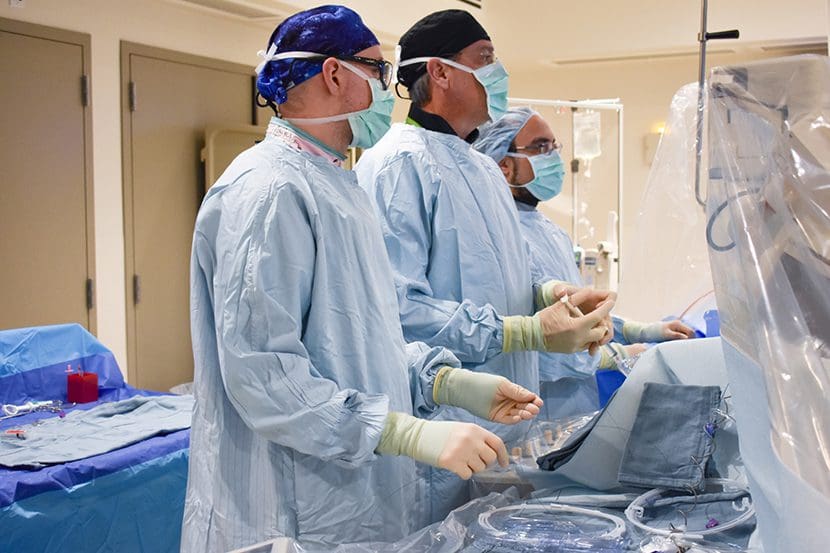
William Lombardi, MD, (center) director of complex coronary artery disease therapies at the Heart Institute, performs a coronary angioplasty with the cath lab team. (Photo taken by Eder Reynoso)
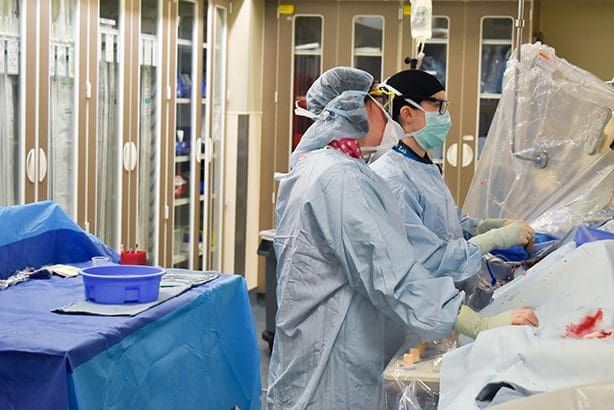
Interventional cardiologist Kathleen Kearney, MD, (right) relies on teamwork to complete a complex coronary intervention. (Photo taken by Eder Reynoso)
While advances in interventional cardiology mean procedures are shorter and easier for patients to recover from, they also mean more complex prep work for the Heart Institute team.
“We are doing a lot of work before the patient even shows up in the room,” McCabe says. “Things like using a CAT scan, which can lay out all the relevant structures of the heart and make computerized models, to help tell us what types of tools will be required or using an echocardiogram to measure things for us and plan in advance.”

Before procedures, Heart Institute staff use ultrasound videos (left) to review cases and prepare. After procedures (right), physicians travel to patients’ rooms to assess their recovery and follow up with family members. (Photos taken by Eder Reynoso prior to COVID-19)
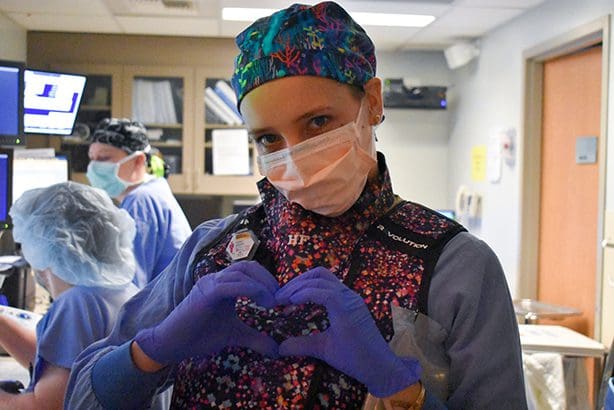
“We have seen amazing growth within our team,” McCabe says. “Not only has new technology allowed us to treat more people within the context of the Puget Sound and WWAMI region, but what we can do for people has also grown.” (Photo taken by Eder Reynoso)
